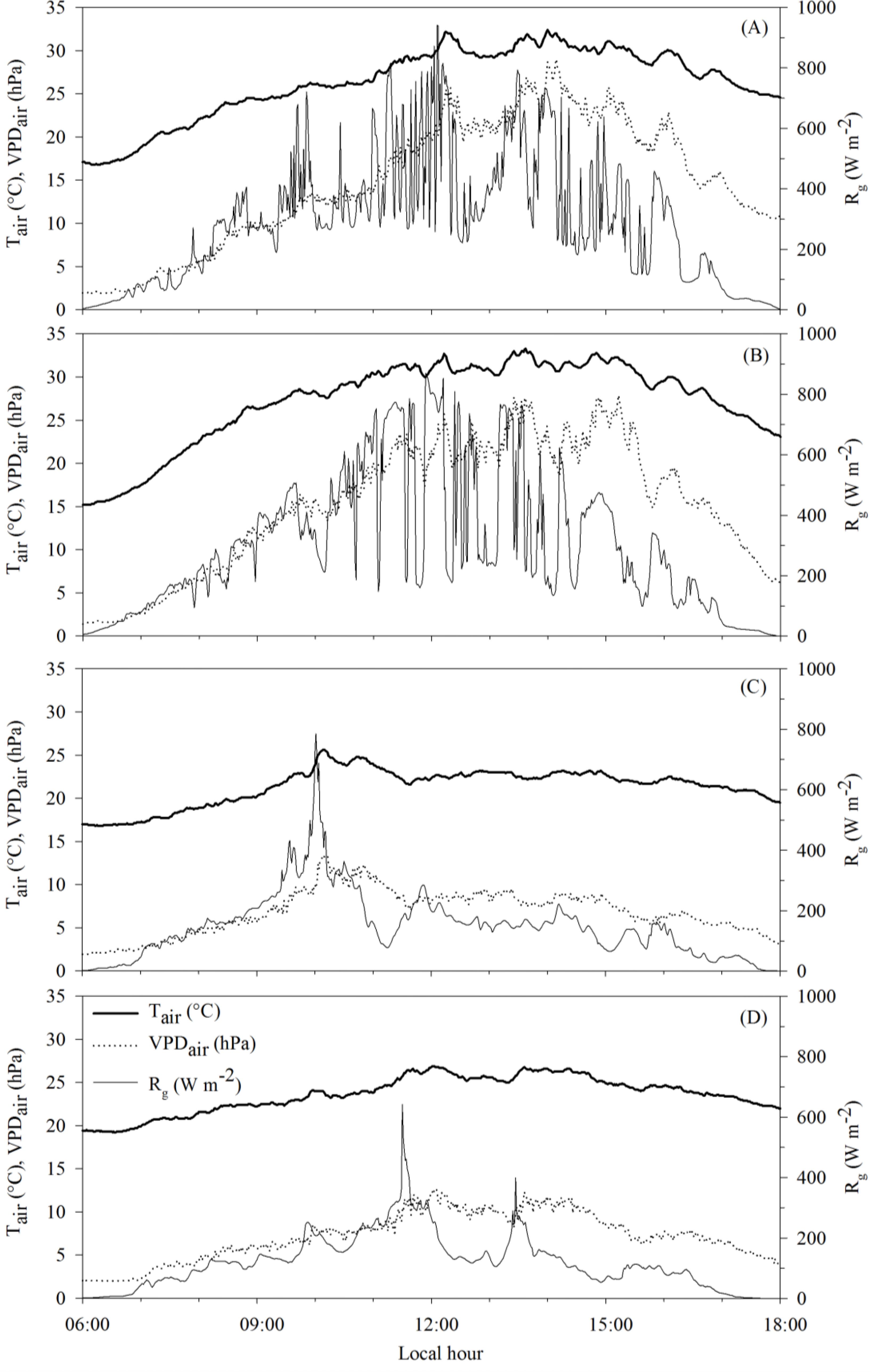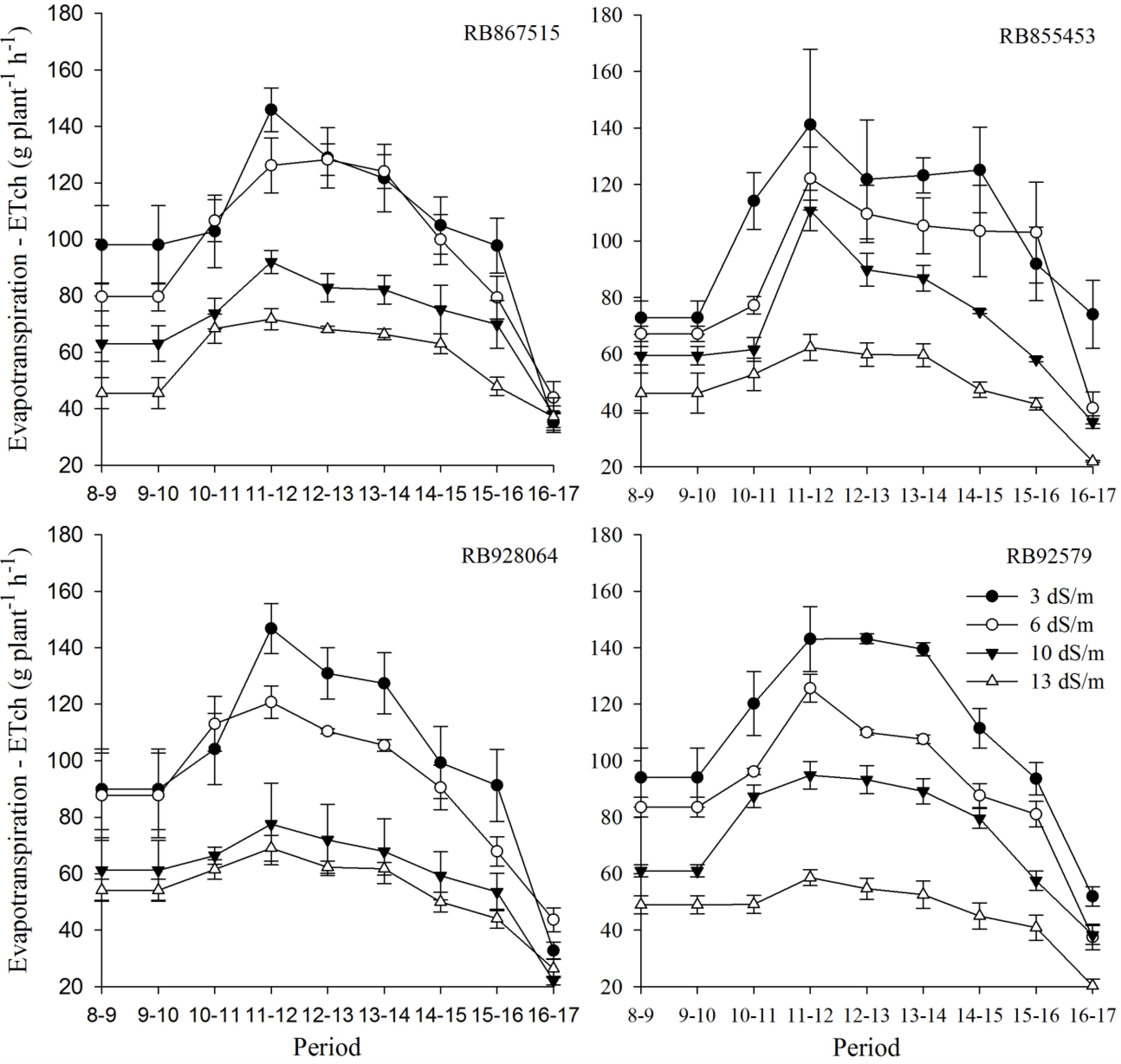ABSTRACT:
The aim of this research was to evaluate the effect of distinct levels of salinity on the evapotranspiration of the RB867515, RB855453, RB92579 and RB928064 sugarcane cultivars. The evapotranspiration was monitored during daytime period under meteorological conditions influenced, mainly by cloud variations. The salinity values were established by addition of 0, 50, 100 and 150 mM of Sodium Chloride (NaCl) to the nutrient solution, which was applied by fertigation, in such way that the electrical conductivity (EC) of the leached solution was near 3, 6, 10 and 13 dS m−1, respectively. The increase of the NaCl concentration in the nutrient solution affected, significantly and in a linear manner, the evapotranspiration of all sugarcane cultivars, such that the days with low cloud provided the highest evapotranspiration values and the greater reduction among salinity levels. Analysis of the evapotranspiration accumulated during the daytime period showed that there were no significant differences among sugarcane cultivars and that, under the highest atmospheric water demand, the evapotranspiration decreased 48.5 g plant−1 EC−1. This value represents the average reduction of 5.1% EC−1 when compared to the treatment without NaCl, considering data of all cultivars.
KEYWORDS:
efficient water use; Saccharum officinarum; saline stress; salinization





